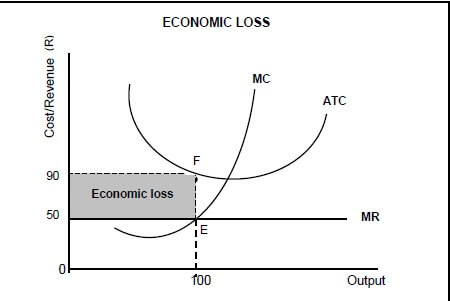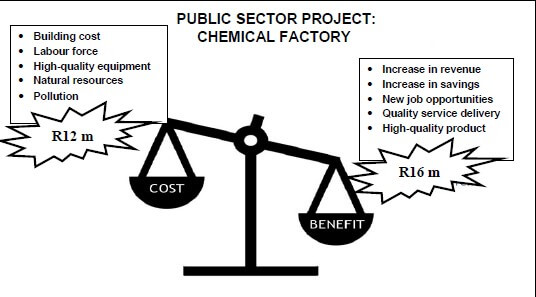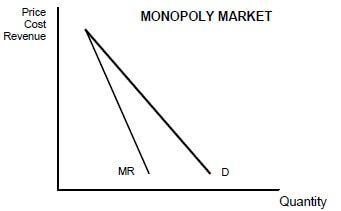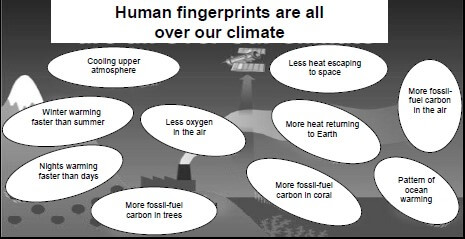ECONOMICS PAPER 2 GRADE 12 QUESTIONS - NSC PAST PAPERS AND MEMOS NOVEMBER 2016
Share via Whatsapp Join our WhatsApp Group Join our Telegram GroupECONOMICS
PAPER TWO (P2)
GRADE 12
NSC EXAM PAPERS AND MEMOS
NOVEMBER 2016
INSTRUCTIONS AND INFORMATION
- Answer FOUR questions as follows in the ANSWER BOOK:
SECTION A: COMPULSORY
SECTION B: Answer TWO of the three questions.
SECTION C: Answer ONE of the two questions. - Answer only the required number of questions. Answers in excess of the required number will NOT be marked.
- Number the answers correctly according to the numbering system used in this question paper.
- Write the question number above each answer.
- Read the questions carefully.
- Start EACH question on a NEW page.
- Leave 2–3 lines between subsections of questions.
- Answer the questions in full sentences and ensure that the format, content and context of your responses comply with the cognitive requirements of the questions.
- Use only black or blue ink.
- You may use a non-programmable pocket calculator.
- Write neatly and legibly.
QUESTIONS
SECTION A (COMPULSORY)
QUESTION 1 30 MARKS – 20 MINUTES
1.1 Various options are provided as possible answers to the following questions. Write down the question number (1.1.1–1.1.8), choose the answer and make a cross (X) over the letter (A–C) of your choice in the ANSWER BOOK.
EXAMPLE: ![]()
1.1.1 An example of a variable-cost item:
- Electricity
- Rent
- Insurance
1.1.2 The slope of the demand curve of an individual firm under perfect market conditions …
- is vertical.
- is horizontal.
- slopes downwards from left to right.
1.1.3 The profitability of a monopolist depends on the cost of production and …
- savings.
- the number of competitors.
- demand.
1.1.4 The costs and benefits for third parties that are NOT included in the market price are called …
- social cost.
- externalities.
- cost of production.
1.1.5 The ratio of the GDP at current prices to the GDP at constant prices is called the … GDP deflator.
- implicit
- explicit
- constant
1.1.6 The variety of plant and animal life in a particular habitat is called …
- biodiversity.
- the carbon footprint.
- deforestation.
1.1.7 An economic situation where there is a high inflation rate together with a high unemployment rate is called ...
- deflation.
- stagflation.
- hyperinflation.
1.1.8 Tourism can help to reduce … in South Africa.
- job opportunities
- savings
- poverty (8 x 2)
(16)
1.2 Choose a description from COLUMN B that matches the item in COLUMN A. Write only the letter (A–I) next to the question number (1.2.1–1.2.8) in the ANSWER BOOK, for example 1.2.9 J.
COLUMN A | COLUMN B |
1.2.1 Private cost | A a general increase in prices caused by an increase in factor costs (8 x 1) (8) |
1.3 Give ONE term for each of the following descriptions. Write only the term next to the question number (1.3.1–1.3.6) in the ANSWER BOOK.
1.3.1 The profit that the producer receives over and above the normal profit
1.3.2 The duration (period) during which at least one factor of production is fixed
1.3.3 Where buyers and sellers of goods and services interact for trading purposes
1.3.4 The legal right whereby the holder obtains the exclusive right to manufacture a product
1.3.5 Gases that trap the heat within the Earth's atmosphere and contribute to global warming
1.3.6 The value of the alternative that is sacrificed when a choice is made in the production of two products (6 x 1) (6)
TOTAL SECTION A: 30
SECTION B
Answer any TWO of the three questions in this section in the ANSWER BOOK. QUESTION 2: MICROECONOMICS 40 MARKS – 30 MINUTES 2.1 Answer the following questions.
2.1.1 Name any TWO institutions that regulate unfair competition in South Africa. (2 x 1) (2)
2.1.2 How will producers benefit from minimum prices that are implemented by the government? (1 x 2) (2)
2.2 Study the graph below and answer the questions that follow. 
2.2.1 Identify the market structure in the graph above. (1)
2.2.2 Give the value of the market price depicted above. (1)
2.2.3 How will this equilibrium position change in the long run (long term)? (2)
2.2.4 What conditions must exist for this firm to shut down? (2)
2.2.5 Calculate the economic loss faced by this firm. (4)
2.3 Study the illustration below and answer the questions that follow. 
2.3.1 Identify ONE external cost in the project above. (1)
2.3.2 Identify a social benefit in the project above. (1)
2.3.3 What can the government do to reduce the external cost of the project above? (2)
2.3.4 How will the government benefit from the approval of the project above? (2)
2.3.5 Why should the government do a cost-benefit analysis before starting each new project? (2 x 2) (4)
2.4 Differentiate between productive inefficiency and allocative inefficiency. (2 x 4) (8)
2.5 How may differentiated products influence consumers and producers in a monopolistic competitive market? (8)
[40]
QUESTION 3: CONTEMPORARY ECONOMIC ISSUES 40 MARKS – 30 MINUTES
3.1 Answer the following questions.
3.1.1 Name any TWO millennium development goals that form part of international agreements that ensure a sustainable environment. (2)
3.1.2 How may taxes be used to ensure environmental sustainability? (1 x 2) (2)
3.2 Read the extract below and answer the questions that follow.
LABOUR MARKET – WAGE DEMANDS The National Union of Mineworkers (NUM) demanded an 84% rise in basic pay for entry-level gold-mining workers, a near 10 percentage point increase on previous demands. NUM, which represents 57% of the workers in the gold-mining industry, wants employers to pay entry-level workers R10 500 per month. [Source: www.publicnewshub.com, June 2015] |
3.2.1 Identify the percentage wage increase in the extract above that was demanded by workers in the transport industry. (1)
3.2.2 Which labour union represents the workers in the mining sector above? (1)
3.2.3 Why is the wage demand by the transport workers unrealistic? (2)
3.2.4 Briefly explain ONE reason for the excessive wage demand above. (2)
3.2.5 What will the impact be on the mining industry if the entry-level workers' wage demands of R10 500 per month are met? (2 x 2) (4)
3.3 Study the information below and answer the questions that follow.
|
GLOBAL WARMING: THE DEBATE There is a 97 per cent consensus among climate experts and in climate science literature that humans are causing global warming. The scientific evidence of this question is overwhelming. [Adapted from Skeptical Science, September 2015] |
3.3.1 What, according to the information above, should be reduced to avoid global warming? (1)
3.3.2 Identify ONE negative effect of global warming. (1)
3.3.3 Briefly describe the term climate change. (2)
3.3.4 Why do businesses resist changing to more environmentally friendly production methods? (2)
3.3.5 What can be done to reduce the emissions caused by the burning of fossil fuels? (2 x 2) (4)
3.4 Differentiate between conservation and preservation. (2 x 4) (8)
3.5 How will you advise the Minister of Tourism to overcome the impact of negative externalities generated by tourism? (4 x 2) (8)
[40]
QUESTION 4: MICROECONOMICS AND CONTEMPORARY ECONOMIC ISSUES 40 MARKS – 30 MINUTES
4.1 Answer the following questions.
4.1.1 Name any TWO types of tourism. (2 x 1) (2)
4.1.2 Why is a perfect competitor unable to influence the market price? (1 x 2) (2)
4.2 Study the graph below and answer the questions that follow.

4.2.1 Which curve represents the average revenue (AR) curve? (1)
4.2.2 How many firms dominate this type of market? (1)
4.2.3 Why does the marginal revenue (MR) curve lie below the demand curve? (2)
4.2.4 Why will the monopolist not be able to charge excessively high prices for his/her product? (2)
4.2.5 Redraw the graph above into the ANSWER BOOK. Indicate economic profit on your graph by inserting the average cost (AC) curve and marginal cost (MC) curve on the same set of axes. (4)
4.3 Study the extract below and answer the questions that follow.
TOURISM: A KEY GROWTH SECTOR Tourism is regarded as a modern-day engine of growth and is one of the largest industries globally. In 2014, G20 heads of state recognised tourism as a driver of growth and development, as well as a sector with the potential to spur global economic recovery. [Adapted from South Africa.info, May 2016] |
4.3.1 Give ONE reason in the extract above why South Africa is regarded as a very popular tourist destination. (1)
4.3.2 Identify in the extract above why the tourism industry has been earmarked as a key sector. (1)
4.3.3 Briefly describe the term tourism. (2)
4.3.4 Give ONE reason why the tourism industry is growing at such a high rate. (2)
4.3.5 In your opinion, how can the tourism industry benefit the poor, rural communities of South Africa? (2 x 2) (4)
4.4 Explain the goals of the South African competition policy. (8)
4.5 How do consumers as key market roleplayers fail to protect the environment? (8)
[40]
TOTAL SECTION B: 80
SECTION C
Answer any ONE of the two questions in this section in the ANSWER BOOK. Your answer will be assessed as follows:
STRUCTURE OF ESSAY | MARK ALLOCATION |
Introduction | Max. 2 |
Body | Max. 26 Max. 10 |
Conclusion
| Max. 2 |
TOTAL | 40 |
QUESTION 5: MICROECONOMICS 40 MARKS – 40 MINUTES
The oligopoly is a necessary market structure in a free-market system.
- Discuss in detail an oligopoly as a market structure. (26 marks)
- Explain, with the aid of a well-labelled graph, why the oligopolist will not compete on price to increase his/her market share. (10 marks)
[40]
QUESTION 6: CONTEMPORARY ECONOMIC ISSUES 40 MARKS – 40 MINUTES
Inflation originates from the demand side or supply side of the economy.
- Examine in detail the causes of demand-pull inflation. (26 marks)
- How successful have monetary policy measures been in combatting demand-pull inflation in South Africa? (10 marks)
[40]
TOTAL SECTION C: 40
GRAND TOTAL: 150
